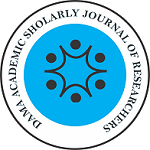Authors: Defi Oktafia, Moch Rizal Ardiansyah, Suharjono*
Departement of Clinical Pharmacy, Faculty of Pharmacy, Airlangga University, 60286, Surabaya, Indonesia
*Corresponding Author E-mail : shj_ms_id@yahoo.com
Abstract
Hypertensive disorders affect up to 10% of pregnancy in the united state. Hypertensive disorders in pregnancy are classified in to gestational hypertension, preeclampsia, preeclampsia superimposed on chronic hypertension, and chronic hypertension. Between those disorders, preeclampsia syndrome is the most dangerous one (Cunningham, et al., 2014). Preeclampsia is clasically defined as new onset hypertension (BP ≥ 140/ 90 mmHg) and proteinuria (excrete > 300 mg/ day, or +1 dipstick test) after 20 weeks gestation (Steegers, et al., 2010). Preeclampsia is a complex multisystem disease with a still unclear etiology. It is commonly accepted that pathophysiology of preeclampsia begins with abnormal placentation, and it results in systemic dysfunction. Preeclampsia is associated with significant maternal and fetal morbidity and mortality, including eclampsia and HELLP syndrome in maternal, preterm birth, intrauterine growth restriction, and perinatal death in fetus (Hariharan, et al., 2017). Correct diagnosis and appropriate therapy are the most important factor in preventing the severity of preeclampsia. However the fetus delivery is the only definitive cure of preeclampsia (Steegers, et al., 2010). The major treatment in preeclampsia are antihypertensive treatment and anticonvulsant treatment. Antihypertensive drug therapy may be used to keep systolic blood pressure at 130-155 mmHg and diastolic blood pressure at 80-105 mmHg. First choice for antihypertensive agents in preecalmpsia are long acting nifedipine and labetalol in severe hypertension and methyldopa or hydralazine in moderate hypertension (Magee, et al., 2014).
Keyword : preeclampsia, antihypertensive.

